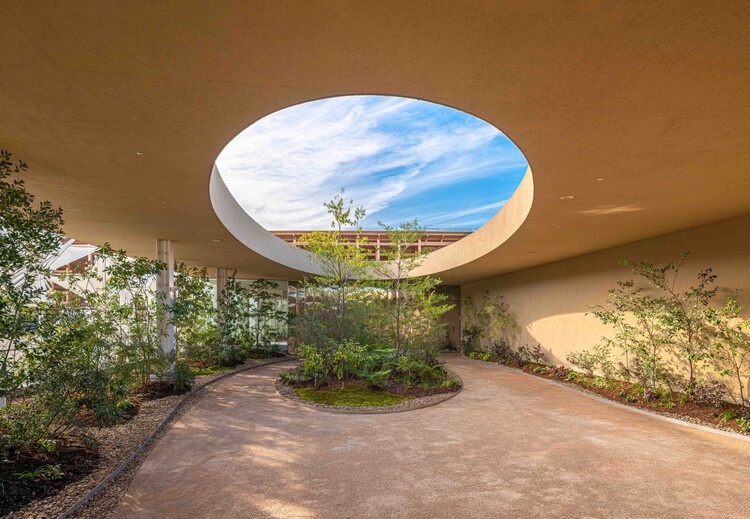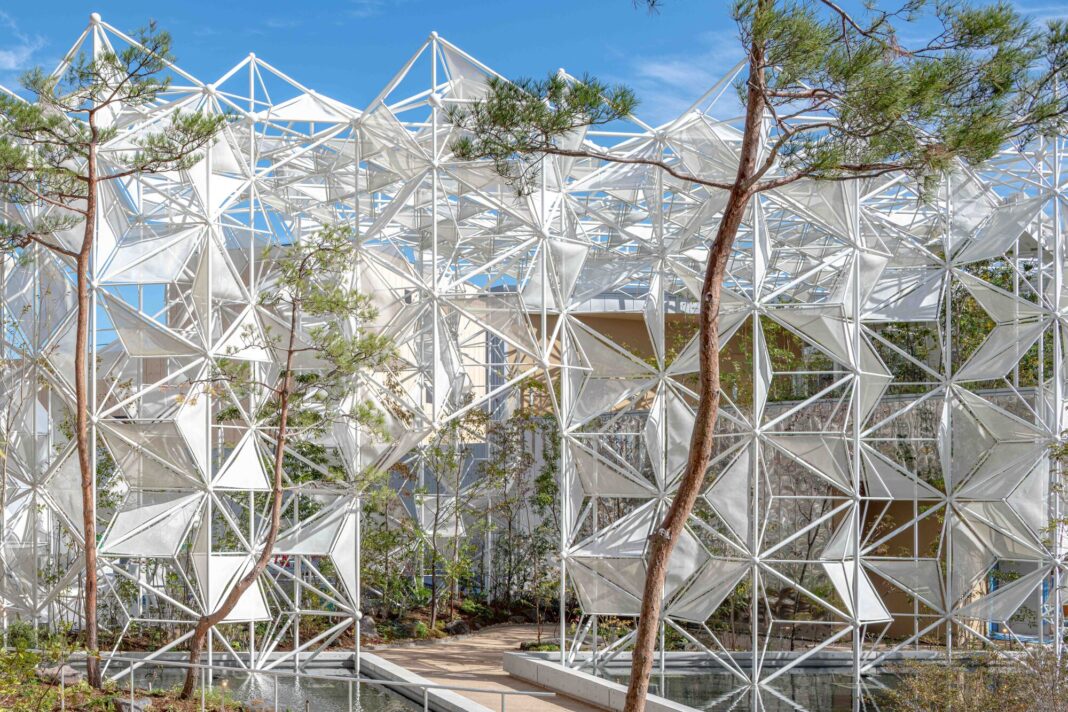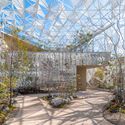

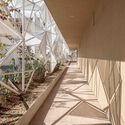
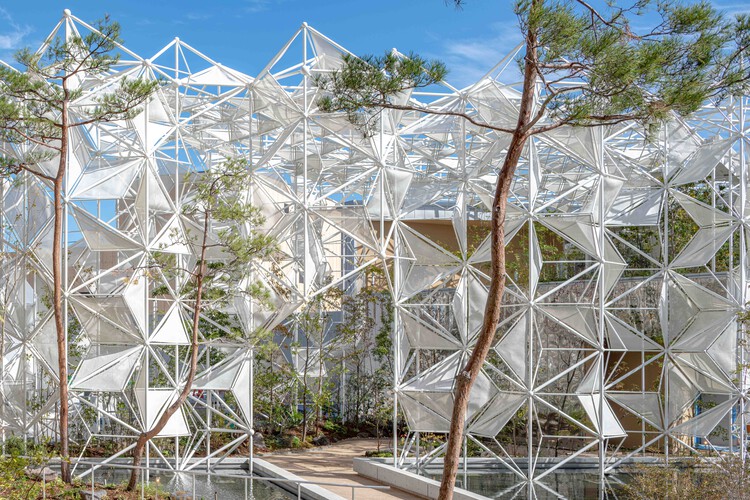
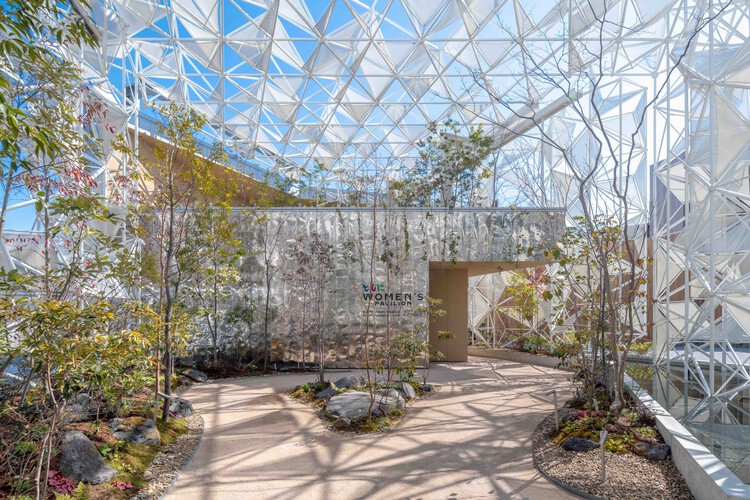
Text description provided by the architects. Women’s Pavilion, in collaboration with Cartier, is a pavilion themed around the promotion of women’s empowerment. The project incorporates two key elements that carry forward the themes of Expo 2020 Dubai into Expo 2025 Osaka, Kansai.
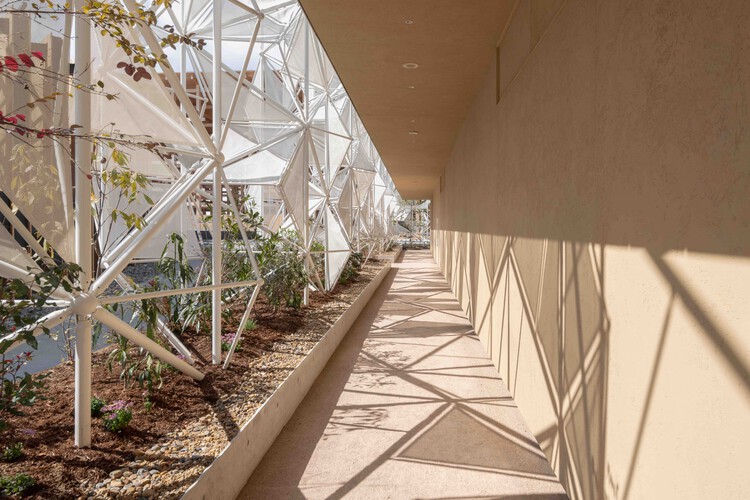
The first element is the continuation of the Women’s Pavilion concept itself, which was launched at Expo 2020 Dubai, and was made to highlight women’s contributions to society. While maintaining the name and spirit of the original Women’s Pavilion, this new iteration is a joint initiative between Cartier, the Japan Association for the 2025 World Exposition, the Cabinet Office, and the Ministry of Economy, Trade and Industry.

The second element is the repurposing of the façade from the Japan Pavilion at Expo 2020 Dubai, originally designed by Yuko Nagayama. This marks potentially one of the first instances in Expo history where components from one pavilion have been reused in a subsequent Expo. This repurposing was not initially included in the Expo budget, and transferring materials from government to private hands involved significant logistical and regulatory challenges. The process began with identifying partners for disassembly, transport, and storage. Obayashi Corporation successfully acquired the government-owned materials through auction and carefully dismantled them. Transport and storage from Dubai to Osaka were managed by Sankyu Inc. Cartier then endorsed the concept of reusing these components for the Women’s Pavilion at Expo 2025 Osaka, Kansai.
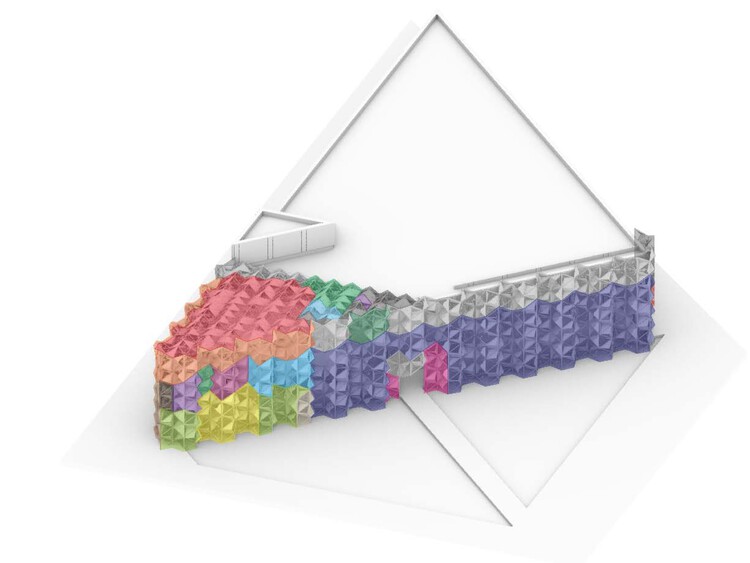
The site of the Japan Pavilion at Expo 2020 was a trapezoidal corner lot. The building featured an isosceles triangular form based on the silver ratio, with a KUMIKO façade acting as an intermediate buffer zone. In contrast, the site for the new Women’s Pavilion is a narrow 110m by 18m lot, resembling the proportions of a traditional Kyoto townhouse, facing the Grand Ring with a 2-meter elevation difference from front to back. Courtyards were placed at the front and center, with a side corridor garden. The repurposed “KUMIKO Façade” from the Dubai Expo gently encloses the space, creating a buffer of light and shadow. The garden features trees collected from the mountains around Osaka, over which the KUMIKO lattice casts patterned sunlight, mimicking the protective role of a forest canopy.


The KUMIKO Façade uses a ball-joint system, which is a structural technique established since Expo 1970 in Osaka and known for its reusability. However, reassembling the structure proved more complex than initially expected. After the Dubai Expo ended, the components were carefully dismantled and packed, requiring one and a half 40-foot containers for storage, then transported to a warehouse in Osaka. The components included approximately 6,000 tubes and 2,000 nodes. Obayashi used its visual project management system “ProMIE™” to map which parts would be used where. The parts were then repurposed and adapted to fit the entirely different site layout of the Osaka pavilion.

Engineering firm Arup developed custom software to reconstruct the pavilion using only existing components, adhering to the goal of not adding new parts. Through structural analysis and precise relocation, the building was reassembled over a period of three months. Despite the challenges, the process led to the creation of a new architectural expression that evolved beyond the initial narrative of sustainability. The components of this structure are already designated to be reused in a subsequent project, with the design for that next phase currently in progress.
Since the design competition for the Japan Pavilion in 2018, Nagayama has wanted to reuse materials and create a space for discussion. The second floor of the current pavilion includes a “WA Space,” a dialogue area inspired by the majlis of the Women’s Pavilion at Expo 2020. This space coincidentally aligns with an idea included in Nagayama’s original proposal for the Japan Pavilion, thereby fulfilling a vision carried through two consecutive Expos.
